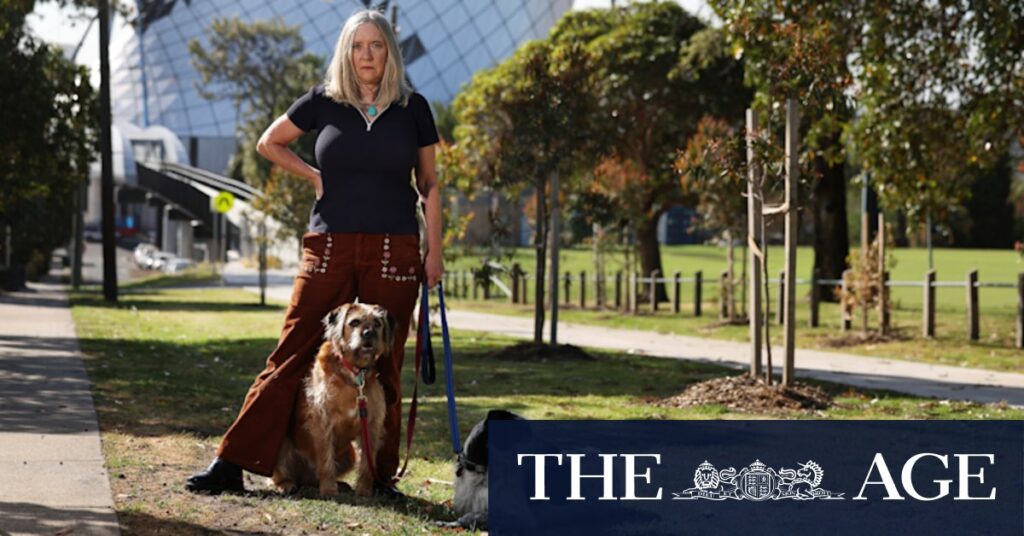
Thousands of residents in Melbourne’s inner-west may face unsafe levels of truck pollution due to the West Gate Tunnel Project’s design choices. Prioritizing aesthetics over engineering standards, the project has come under scrutiny following a new report commissioned by the Maribyrnong Truck Action Group (MTAG).
The report’s findings have led to calls for the Environment Protection Authority (EPA) to reassess the tunnel’s twin ventilation stacks. These structures, according to the report, may fail to prevent harmful fumes from reaching nearby communities. Last week, Transurban applied to the EPA for a license to operate the tunnel, a crucial step before the $10.2 billion toll road can open in December.
Concerns Over Ventilation Design
The MTAG argues that without pollution filters on the 50-meter vents located in Yarraville and Altona North, the tunnel should not commence operations. Residents contend that the project’s goal of diverting 9,000 trucks off local roads daily is futile if the air quality deteriorates due to unfiltered emissions from the tunnel.
Despite these concerns, the project team maintains that their technology will ensure pollutants are dispersed safely. However, a report by consultancy Synergetics challenges this claim, highlighting that the vents lack the necessary height and velocity to effectively disperse emissions.
“The design has an unusual and complex geometry and does not comply with good engineering practice guidelines. The surrounding residential community is likely to experience increased adverse health outcomes including increased levels of cardiovascular and respiratory disease.”
Community and Legal Actions
MTAG president Martin Wurt revealed that the group raised $25,000 from community members to fund the report and has engaged legal representation to challenge the EPA. Wurt is pushing for a formal meeting with the EPA to discuss Transurban’s license application and advocate for mandatory filtration systems.
As the EPA reviews the application, it has 15 business days to respond to MTAG’s request. Wurt has not ruled out legal action should the EPA not impose conditions for filtration.
“It’s so alarming that the design of these vent stacks to make them look pretty has been modelled to have a detrimental impact [with regard] to pollution,” Wurt said. “Underneath, it’s no better than a bathroom exhaust fan.”
Impact on Local Communities
The report specifically modeled the southern vent at Altona North, predicting significant impacts on nearby residences. An estimated 10,000 people are expected to live within 500 meters of the vent once residential developments are completed. Similarly, the Yarraville vent could expose uphill residents to high levels of toxic fumes.
Local resident Sarah Tartakover expressed her disillusionment, stating that she feels betrayed by the project’s promises of cleaner air.
“Instead, it could be worse for me because pollution will be condensed,” Tartakover said. “It feels like a Trojan horse. The more attractive the structure becomes, it’s also becoming more nefarious.”
Official Responses and Future Steps
Environment Minister Steve Dimopoulos met with Wurt in June to discuss the report, resulting in the installation of three new air quality monitors near the vents. The EPA plans to share air quality data with the community six months after the tunnel’s opening.
An EPA spokesperson noted that emissions at ground level from the vents were expected to be low, with close monitoring guiding future decisions on retrofitting filters. Meanwhile, a Victorian government spokesperson emphasized the project’s benefits, including improved air quality and reduced truck traffic.
“The West Gate Tunnel project is expected to meet or exceed all relevant air quality requirements in both the construction and operations phase,” the spokesperson said.
As the community awaits the EPA’s decision, the debate over the West Gate Tunnel’s impact on air quality continues to intensify, highlighting the ongoing tension between infrastructure development and environmental health.







